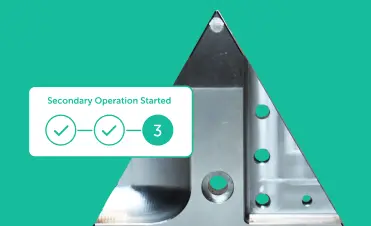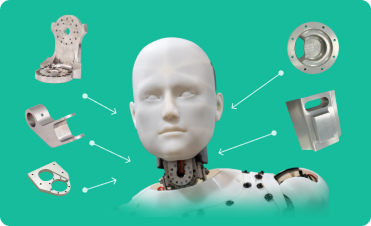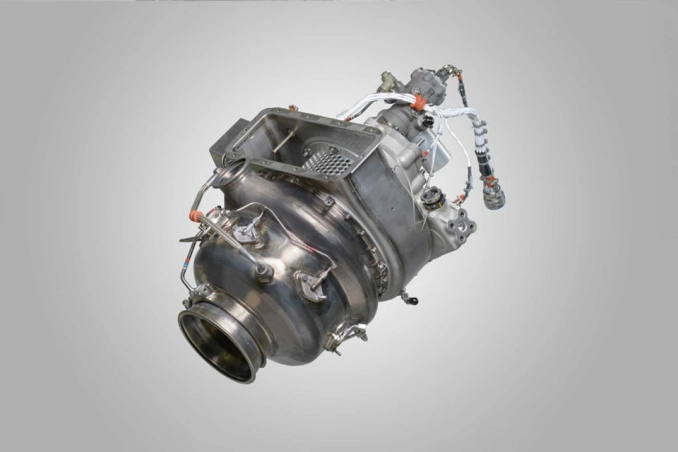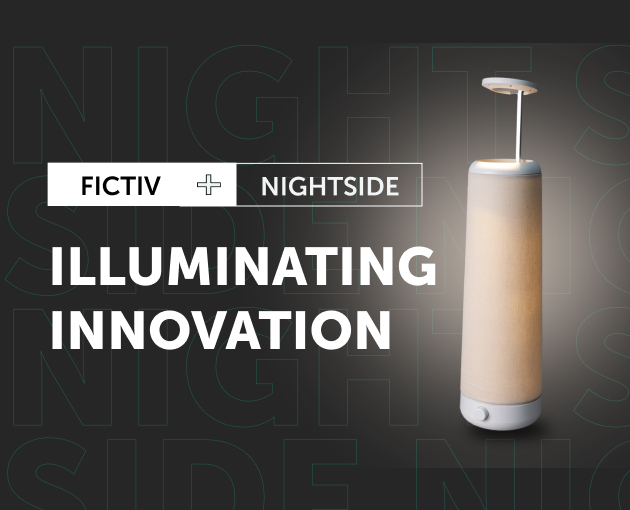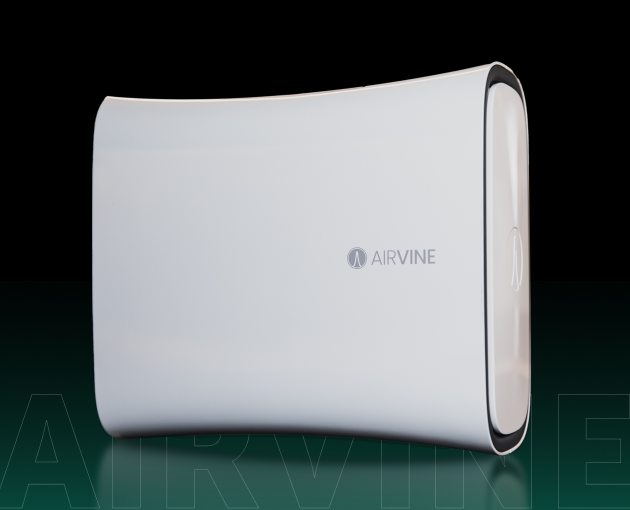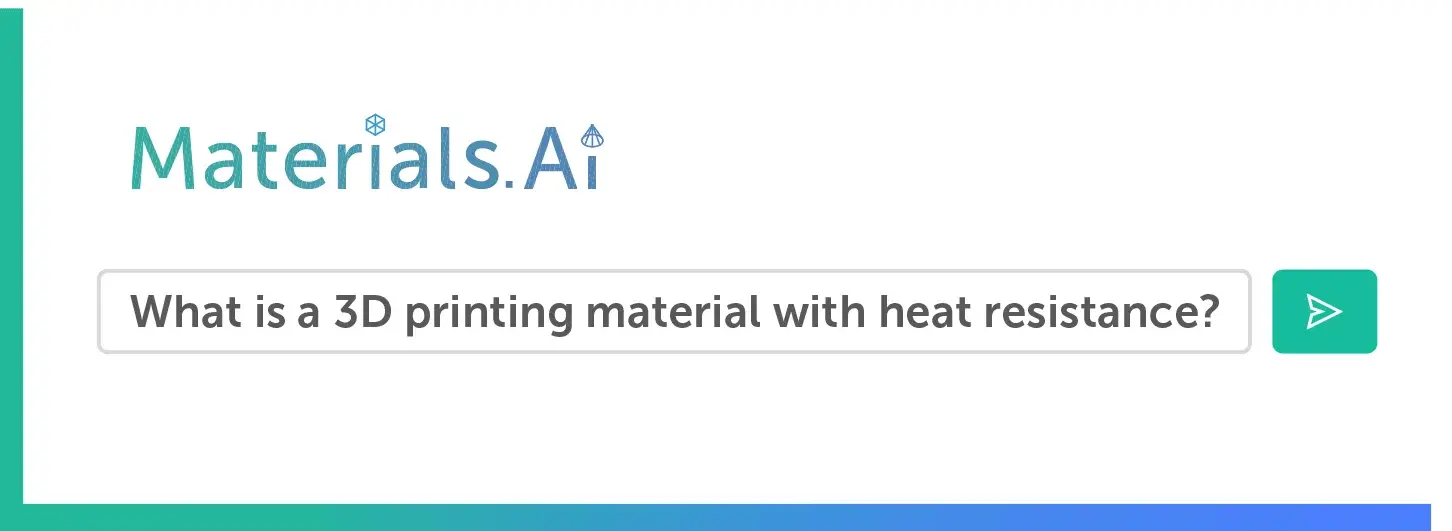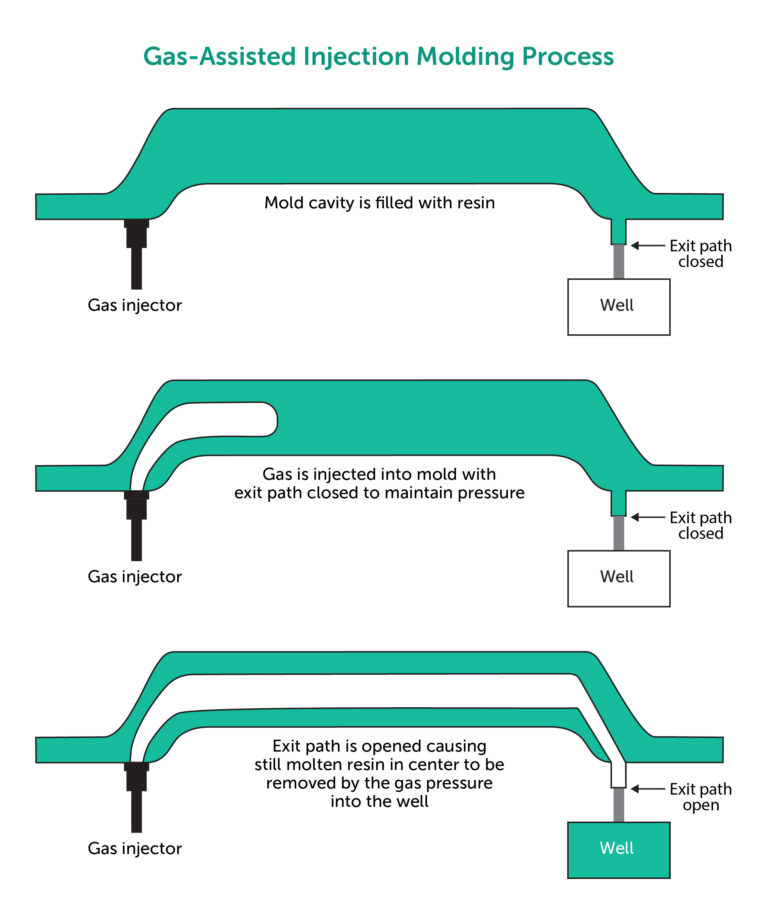Time to read: 7 min
Imagine designing a complex assembly with rotating parts that come into contact with each other. You have dialed in your dimensions and tolerances, ordered fasteners, and assembled your prototype parts. But as you rotate the components, they bind against each other, or even make grinding or squeaking noises. In this case, you may need a material with a low coefficient of friction.
POM (polyoxymethylene), also known as acetal or the branded name Delrin®, is a high-strength engineering thermoplastic valued for its dimensional stability, ease of machining, lubricity, and excellent wear resistance. These characteristics make it a strong candidate for use in precision mechanical parts where low friction, reliability, and accuracy are essential.
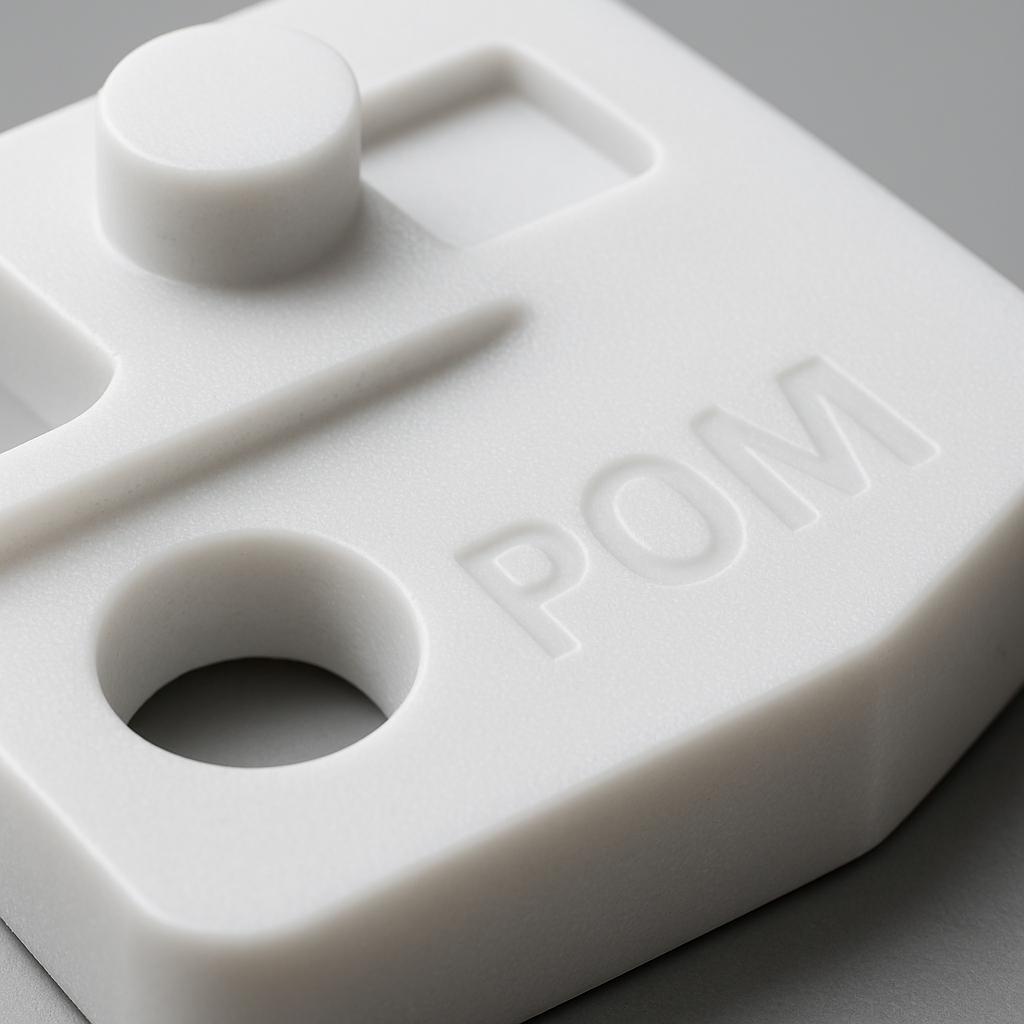
In this article, we’re not talking about small dogs or pom-poms. We will explore POM’s most important physical and mechanical properties, its advantages and limitations, and how it compares with other engineering plastics, as well as key design considerations for engineers utilizing this polymer.
Key Properties and Performance Characteristics of POM Plastic
POM combines strong mechanical, thermal, and chemical properties, so engineers often turn to it for demanding applications. The natural color of this material is white, but it is widely available in a variety of colors. The table below summarizes POM’s key properties.
POM Material Properties Table
| Property | Value/ Detail |
| Tensile Strength | 6,000–11,000 psi (41–76 MPa) |
| Flexural Modulus | 350,000–450,000 psi (2.4–3.1 GPa) |
| Creep Resistance | Excellent under moderate loads and temperatures (grade dependent) ~1.5–3.0% strain over 3,000 hours at 21 MPa, 23°C |
| Melting Point | 165–175°C (329–347°F) |
| Density | 1.39–1.42 g/cm³ |
| Continuous Service Temperature | 85–115°C (varies by grade) |
| Moisture Absorption | Very low (0.2–0.5% by weight at 24h, 23°C) |
| Chemical Resistance | Resists most oils, fuels, weak acids and bases; avoid strong oxidizers |
| Electrical Insulation | Good dielectric strength (400–600 V/mil); suitable for circuit boards and electronics |
Advantages of POM Plastic
- Low Friction Coefficient
The low friction coefficient and self-lubricating nature of POM’s surface reduce dependence on external lubrication. Rotating or sliding components like gears, sprockets, bushings, and bearings maintain smooth, reliable operation for years. - Fatigue and Creep Resistance
Strong resistance to fatigue and creep means that POM can survive many load cycles without noticeable deformation. It is ideal for mechanical parts under dynamic loads, such as rotary bushings and pump impellers. - Ease of Machining
POM mills and turns easily, leaving clean edges and producing parts with far less tool wear. This makes it well-suited for sliding surfaces and custom-fit housings - Wear Resistance
Top-tier wear resistance yields a long-lasting component that performs reliably in abrasive or heavy-duty situations, such as wear strips and conveyor guides.
Limitations and Design Trade-Offs
- UV Instability
The material is not very UV-stable. Left out in the sun for months, the surface can become rough and change color, so outdoor parts often require a different resin unless a stabilized grade is chosen. - High Temperature Limitations
POM has a hard limit upper-temperature ceiling. It melts near 175°C; however, its recommended service temperature is around 100 to 120°C. Temperatures above this range will cause a rapid decline in mechanical properties such as tensile strength and dimensional stability. - Creep at High Temperature and Stress
Under constant load, POM is susceptible to creep deformation over time, particularly at ambient temperatures above 40°C. For example, in environments like a Florida summer (35–40°C), creep can become significant, especially if stress levels approach 15–20 MPa. At temperatures above 60°C, even moderate loads can lead to noticeable long-term deformation. - Bonding Difficulty
Joining POM is challenging, even with standard industrial glues, because its surface energy is around 40 mN/m. That relatively low surface energy, which gives POM its slippery feel and near-non-stick quality, also stops most adhesives from spreading out and anchoring to the surface. - Engineers usually rely on surface treatments—such as chemical primers, a quick flame pass, or plasma activation, to raise energy and add a bit of texture. Although these steps improve bond strength, they also lengthen the assembly line cycle and add another layer of work for operators.
POM Homopolymer vs. Copolymer
POM comes in two basic types (homopolymer and copolymer), and each brings its own strengths and weaknesses. POM, or acetal, is available in two primary grades: homopolymer POM-H and copolymer POM-C. Both variants deliver impressive stiffness, precise size control, and slick, low-friction surfaces, yet they each bring unique advantages to the table.
Homopolymer grades, like DuPont’s Delrin® family, usually exhibit a marginal edge in ultimate strength and hardness because of their more consistent polymer chain structure. The trade-off is a greater tendency for centerline porosity during thick-section molding and somewhat lower tolerance to harsh solvents.
Copolymer grades introduce a small comonomer that enhances heat resistance and shields against weak acids or bases, while largely mitigating porosity problems. Deciding between them boils down to whether the application requires maximum tensile strength or additional chemical and thermal protection.
POM vs. Other Engineering Plastics
When choosing a plastic for precision components, it’s worth comparing POM with other common engineering grades. The table below highlights the general tendencies of POM compared to those of other thermoplastic materials.
Chart of POM Compared With Other Plastics
| Property | POM | Nylon | UHMW | PTFE | PP |
| Tensile Strength | High | Moderate | Moderate | Low | Low |
| Moisture Absorption | Low | High | Low | Very Low | Very Low |
| Friction Coefficient | Very Low | Low | Very Low | Extremely Low | Moderate |
| Machinability (Ease of Cutting) | Excellent | Good | Fair | Poor | Fair |
| Machinability (Precision) | High | Good | Low | Low | Low |
| Abrasion Resistance | Good | Good | Excellent | Poor | Poor |
| Chemical Resistance | Good | Good | Good | Excellent | Good |
| Cost | Moderate | Low | Moderate | High | Very Low |
Use POM when:
- You’re designing gears, bearings, or slides that must move quickly and meet low-friction targets.
- The part will sit near spilled water, oil, or in a situation where humidity is high, and you can’t afford to have the component swell.
- Use POM when every hole, boss, and edge must stay within a 0.1 millimeter dimensional allowance—even after repeated heat cycles.
Consider alternatives to POM when:
- Some assemblies must withstand prolonged exposure to high temperatures, often over 120°C for hours, such as when mounted near engine blocks or inside heated tooling. In such cases, high-performance polymers like PPS or PEEK retain their stiffness and strength significantly better than POM.
- Sunlight is an unavoidable factor in some use cases. Standard POM loses its color and strength when exposed to sunlight outside.
- Strong acids, ketones, or liquid gases can regularly contact plastic; compounds like PTFE or PVDF are more resistant to these threats.
Processing Methods
CNC Machining
For a smooth machined finish, typically about Ra 1.6 µm or finer, machine operators rely on steel called high-speed steel or carbide cutters, operating them at high spindle speeds while maintaining low to moderate feed rates.
Because POM has low resistance to cutting forces but maintains dimensional stability when heated, the bar seldom deflects, and tight tolerances hold, even on intricate shapes. Its natural self-lubrication keeps temperatures down, extending edge life and making part quality repeatable across larger production runs.
Injection Molding
In high-volume production, POM comes in handy in injection molding, where it can be used to easily make thin-walled parts with complex geometries. Success hinges on careful control of mold temperatures and cooling rates; however, to avoid the development of internal stresses or visible warpage.
Designers, therefore, need to map the polymer’s typical shrinkage and flow traits into the 3D model before the steel mold is cut. When processing conditions are well-controlled, manufacturers can make molded POM parts with uniform wall thicknesses that meet tight dimensional tolerances.
Extrusion
POM is well-suited for extruding rods, sheets, and custom profiles needed in modern shops, from automotive to consumer goods. Because the extrusion process preserves the polymer’s strength through the entire length, the parts lack the hidden defects sometimes found in cast or 3D-printed pieces, letting engineers move straight to CNC turning or milling.
That reliability speeds prototyping and short runs, where every hour counts and scrap must be kept low. In addition, POM stock comes in many grades and sizes, so teams can pick nearly finished blanks and cut lead time dramatically.
Design Considerations for POM
Tolerancing for Thermal Expansion
POM stays dimensionally stable in many environments, but it has a relatively high coefficient of thermal expansion compared to metals like steel. As a result, tolerances should allow for slight thermal growth, especially in precision assemblies exposed to temperature changes.
Surface Finish and Mating Components
POM arrives with a natural gloss that equals a low-friction slide. Matching parts should share a similar finish to avoid unwanted wear. Make sure that the parts you plan to mate match in hardness and lubricity. If they don’t, one will wear out quicker, or the two may bind and stick together.
Avoiding Undercuts in Injection Molding
Undercuts in injection molding drive up production cost and the time it takes to change molds. Where possible, redesign the part to avoid undercuts, or use them only when no other option exists.
Mechanical Fastening Over Bonding
POM naturally has a low surface energy, so most glues struggle to stick to it well. Without a surface treatment, such as plasma etching, flame cleaning, or a chemical primer, the bond is likely to fail. Because of that, many engineers default to screws, snap fits, or press fits, since those options work consistently. Still, when the surface is prepared correctly and a matching specialty adhesive is used, bonding POM can be reliable in specific situations.
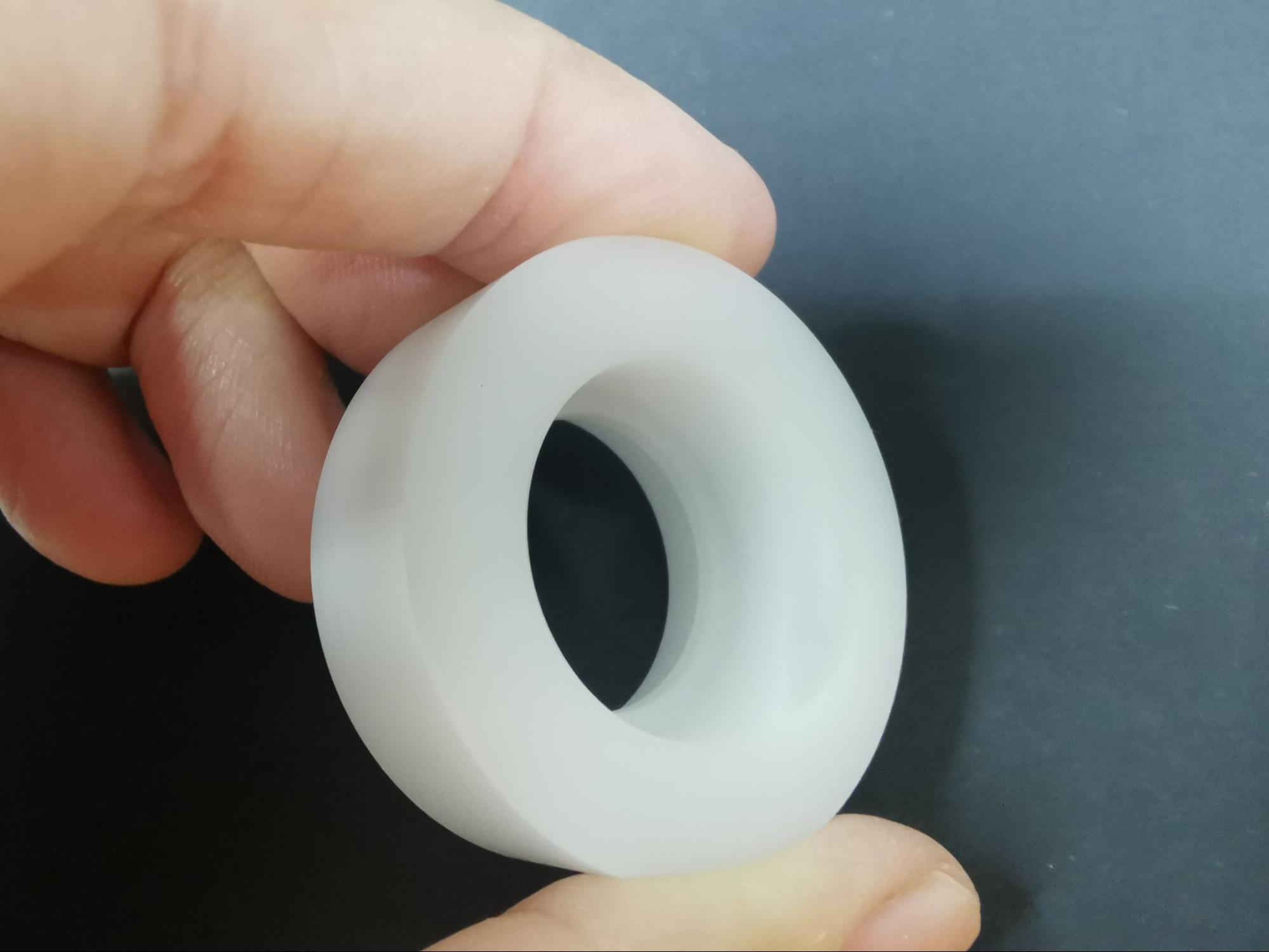
Producing Durable, Precise Plastic Parts with POM
The brand-name POM homopolymer called Delrin® is a tough, reliable engineering plastic that pairs high strength with a smooth, easy-to-machine finish. Its smooth surface, low friction, and excellent dimensional stability make it the go-to choice for precision parts that must operate quietly and endure wear for years. Gears, bushings, bearings, pump housings, and sliding trays all take advantage of POM’s natural self-lubrication and its strong resistance to water and most common chemicals.
That said, all POM types are susceptible to degradation in sunlight and can soften above 120°C. Delrin® offers higher strength but is more moisture-sensitive. Bonding remains difficult for both; without proper surface prep or adhesive selection, joints may weaken or fail unexpectedly. Nonetheless, POM gives manufacturers the repeatable performance and durability they require in many large-volume plastic part applications.
Fictiv’s network takes the hassle out of ordering premium components in POM (acetal/Delrin®), or other materials that fit your needs. From prototypes to higher-volume runs, our teams deliver speed, precision, and consistency you can trust.
Get an instant quote today on our digital manufacturing platform.
